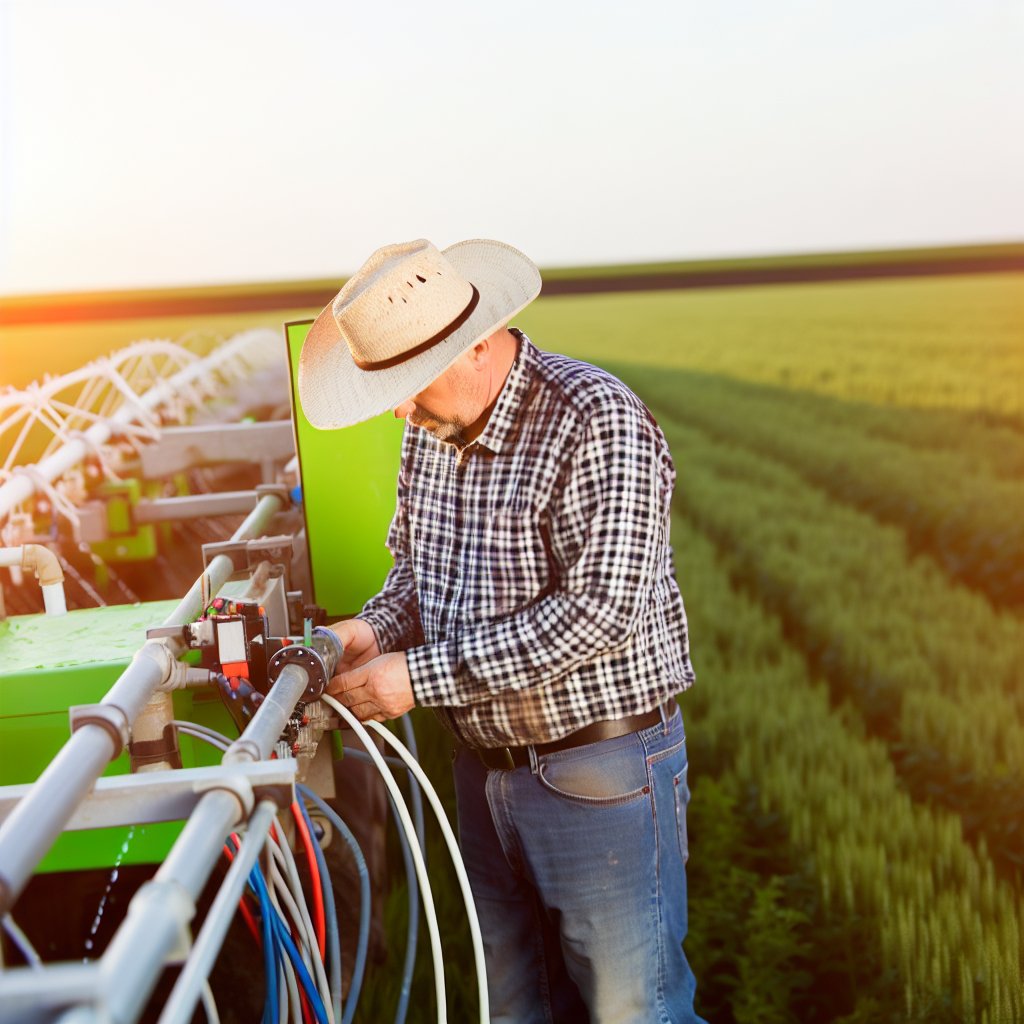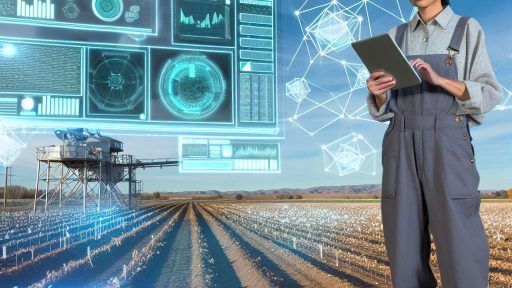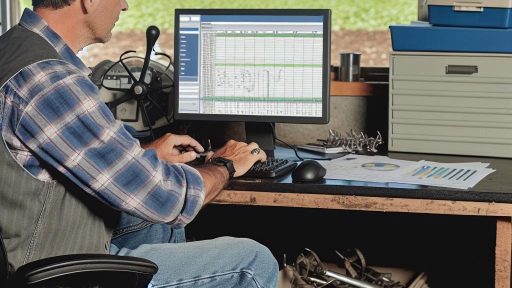Introduction to Automated Machinery in Farming
The integration of automated machinery is transforming traditional farming practices.
This technology enhances efficiency and sustainability in agriculture.
Farmers can significantly improve productivity by adopting automated solutions.
Automation reduces the need for manual labor, allowing for more streamlined operations.
Types of Automated Machinery
A variety of automated machinery exists in modern farming.
Examples include precision seeders, robotic harvesters, and autonomous tractors.
These machines use advanced technology to perform specific tasks efficiently.
Moreover, drones have emerged as vital tools for aerial monitoring and crop assessment.
Benefits of Automation
The advantages of incorporating automated machinery into farming are numerous.
First, automation can lead to reduced operational costs over time.
Second, it allows for more precise farming techniques, enhancing crop yields.
Additionally, automated systems can operate continuously, maximizing productivity.
Farmers experience less physical strain, contributing to a healthier workforce.
Challenges in Adoption
Despite the benefits, farmers face challenges when adopting automated machinery.
High initial costs can restrict access for smaller operations.
Transform Your Agribusiness
Unlock your farm's potential with expert advice tailored to your needs. Get actionable steps that drive real results.
Get StartedFurthermore, a knowledge gap exists regarding operating and maintaining these technologies.
There is also concern about job displacement among agricultural workers.
The Future of Farming with Automation
Looking forward, automated machinery presents a promising future for agriculture.
Technological advancements will continue to evolve and improve efficiency.
As more farmers recognize the benefits, adoption rates will likely increase.
Collaboration between technology developers and farmers can drive innovation.
Benefits of Automation in Traditional Farming Practices
Enhancing Efficiency
Automation significantly increases farming efficiency.
Cultivation tasks that once took hours can now be completed in minutes.
As a result, farmers can focus on other important aspects of their operations.
Furthermore, automated machinery reduces the manual labor required.
Improving Yield Quality
Automated systems monitor crop health more precisely.
This technology helps in identifying issues before they escalate.
Consequently, it leads to higher quality yields overall.
Moreover, automation enables consistent application of nutrients and water.
Reducing Operational Costs
Utilizing automated machinery can lower labor costs substantially.
In addition, it minimizes wastage of resources like seeds and fertilizers.
As a result, farmers enjoy greater profit margins.
Additionally, maintenance costs are often lower compared to manual processes.
Facilitating Data Collection
Automated systems collect valuable data on farming practices.
This data aids in making informed decisions to improve productivity.
Furthermore, it helps farmers analyze trends over time.
When used effectively, data collection drives innovation in farming methods.
Adapting to Labor Shortages
The agricultural sector often faces labor shortages.
Automation provides a solution by filling these gaps effectively.
Showcase Your Farming Business
Publish your professional farming services profile on our blog for a one-time fee of $200 and reach a dedicated audience of farmers and agribusiness owners.
Publish Your ProfileAs a result, farms can continue to operate smoothly without disruption.
Moreover, it enhances the resilience of farming operations in challenging times.
Challenges and Barriers to Implementing Automated Machinery
Cost Implications
Implementing automated machinery requires significant investment.
Farmers often struggle to cover initial costs and ongoing maintenance expenses.
Morever, smaller farms may lack the necessary capital for such implementations.
As a result, many traditional farmers feel hesitant to adopt new technologies.
Technical Expertise
Another challenge involves the technical knowledge required for operation.
Farmers may lack training in handling complex machinery systems.
Additionally, support for ongoing technical issues is often insufficient.
Consequently, the lack of skills creates significant barriers to adoption.
Integration with Existing Systems
Integrating automated machinery with traditional farming systems poses difficulties.
Older equipment may not be compatible with new technology.
This can lead to inefficiencies in overall farm operations.
Furthermore, farmers might resist changing long-established methods.
Cultural Resistance
Cultural attitudes towards technology can hinder adoption.
Some farmers view automation as a threat to traditional practices.
This skepticism creates a reluctance to embrace new machinery.
Moreover, the fear of losing jobs in the farming community contributes to this resistance.
Regulatory Challenges
Navigating regulatory requirements can feel overwhelming.
Farmers may face difficulty understanding new agricultural laws.
Compliance with environmental standards can also complicate machinery use.
This uncertainty discourages many from adopting automated solutions.
Discover More: Benefits of Controlled Environment Agriculture for Sustainable Farming
Types of Automated Machinery and Their Uses in Agriculture
Robotic Harvesters
Robotic harvesters facilitate efficient crop collection.
They minimize labor requirements during peak harvest times.
These machines use advanced sensing and navigation technologies.
Additionally, they can operate in various weather conditions.
Precision Planting Equipment
Precision planting equipment enhances seed placement accuracy.
This machinery ensures optimal spacing and depth for seeds.
It contributes to healthier crop growth and yields.
Furthermore, it reduces seed waste during the planting process.
Automated Irrigation Systems
Automated irrigation systems streamline water usage in farms.
They utilize sensors to measure soil moisture levels.
These systems operate based on real-time environmental data.
As a result, they promote water conservation and efficiency.
Drones for Crop Monitoring
Drones provide valuable aerial views of crops.
They help farmers identify issues such as pests or diseases.
With drones, farmers can collect data quickly and accurately.
Additionally, they enhance the ability to assess crop health.
Livestock Monitoring Technologies
Livestock monitoring technologies improve animal welfare and management.
Showcase Your Farming Business
Publish your professional farming services profile on our blog for a one-time fee of $200 and reach a dedicated audience of farmers and agribusiness owners.
Publish Your ProfileThey track health, behavior, and location of animals.
This technology enables farmers to respond promptly to issues.
Moreover, it enhances productivity and efficiency in livestock operations.
Smart Fertilization Systems
Smart fertilization systems utilize data for nutrient application.
They assess soil health and crop nutrient needs efficiently.
These systems help maintain environmental sustainability.
Furthermore, they reduce the risk of over-fertilization.
Explore Further: AI-Driven Crop Monitoring Techniques
Integrating Automated Systems with Existing Farming Equipment
Understanding Current Farming Practices
Farmers largely depend on traditional methods for cultivation and harvesting.
Many farmers have established deep-rooted practices over generations.
These methods often focus on local conditions and crop types.
Firstly, understanding these practices is key before introducing automation.
Assessing Compatibility of Automation
Farmers should evaluate their current equipment for automation compatibility.
This involves identifying machinery that can integrate automated features.
For example, tractors may be fitted with GPS for precision farming.
Identifying compatible tools reduces transition friction and costs.
Choosing Suitable Automated Technologies
When selecting technology, consider the specific needs of the farm.
Automated machinery can include drones for monitoring crops.
Robotic systems may assist in planting or harvesting tasks.
Smart irrigation systems help optimize water usage effectively.
Training Staff and Farmers on New Technologies
Training is vital for smooth integration of automation in farming.
Farmers should familiarize themselves with new equipment thoroughly.
Effective training can improve efficiency and reduce operation errors.
Instructors should emphasize hands-on experience with the technology.
Monitoring and Evaluating Performance
Establish a regular schedule for monitoring automated systems.
Farmers should track performance metrics to evaluate improvements.
Adjustments may be necessary based on data gathered during operations.
Continuous assessment will lead to optimized results over time.
Adapting to Challenges and Changes
Change can be daunting, but adaptation is crucial for success.
Farmers should remain flexible to emerging technologies and practices.
Communication with other farmers can provide valuable insights.
Building a community around shared experiences encourages growth.
See Related Content: Implementing Automated Machinery In Organic Farming
Case Studies: Successful Integration of Automation in Traditional Farms
Agricultural Innovations in California
Green Valley Farms in California faced labor shortages during peak seasons.
To address this, they integrated automated harvesters to streamline operations.
These machines significantly increased their efficiency and reduced harvest time.
As a result, the farm reported a 30% increase in yield within the first year.
Enhancing Efficiency in Midwestern States
Riverbend Ranch in Iowa adopted drone technology for crop monitoring.
These drones collect precise data about crop health and soil conditions.
Consequently, the ranch used this data to optimize irrigation and fertilizer use.
Showcase Your Farming Business
Publish your professional farming services profile on our blog for a one-time fee of $200 and reach a dedicated audience of farmers and agribusiness owners.
Publish Your ProfileThis approach reduced water consumption by 25% and lowered input costs.
Reducing Labor Costs in Organic Farming
Sunnyfield Organic Farms in Oregon implemented robotic weeders.
This innovation minimized labor costs while reducing the need for herbicides.
As a result, the farm maintained its organic certification with fewer chemical inputs.
Moreover, the robots improved overall weed control efficiency by 40%.
Increasing Precision and Reducing Waste
HarvestTech Solutions partnered with local farmers in Australia.
They introduced precision agriculture tools for planting and fertilizing.
This technology reduced seed and fertilizer waste significantly.
Farmers reported a 15% reduction in overall costs due to these improvements.
Improving Livestock Management
Hilltop Dairy in Wisconsin utilized automated feeding systems.
This enabled consistent and accurate feeding schedules for their livestock.
As a result, the dairy increased milk production and enhanced animal welfare.
Farmers noted a decrease in feeding labor hours by 50% after the implementation.
Collaborations for Future Success
Many farmers partnered with tech companies for automation solutions.
These collaborations often led to customized applications tailored to specific needs.
Such partnerships created a flexible framework for ongoing agricultural innovation.
Overall, successful integration of automated machinery spurred growth in traditional farming.
Learn More: Data-Driven Farming: Leveraging Software For Better Decision Making

Future Trends in Farming Automation Technology
Emerging Technologies in Agriculture
Technological advancements are reshaping the farming landscape.
Robotics will play a pivotal role in various agricultural processes.
Automated machinery can improve efficiency and reduce labor costs.
Drones will assist in crop monitoring and field analysis.
Laser technology could enhance precision farming techniques.
Data-Driven Decision Making
Big data analytics will revolutionize how farmers manage their resources.
Farmers will use data to optimize crop yields and reduce waste.
Predictive analytics will enable proactive decision-making for better harvest outcomes.
Remote sensing technologies will offer real-time insights into field conditions.
Integration of AI in Agriculture
Artificial intelligence is transforming agricultural practices.
AI algorithms can predict weather patterns and plant health.
Smart machines will learn from data to enhance the farming process.
This technology can personalize farming techniques based on specific needs.
Sustainability and Environmental Considerations
Automation will contribute to sustainable farming practices.
Precision agriculture will minimize resource usage and environmental impact.
Farmers will adopt eco-friendly technologies to enhance sustainability.
Automated systems can help efficiently manage water and fertilizer applications.
Collaborative Farming Models
Farmers will increasingly collaborate with tech companies.
Partnerships will drive the development of innovative agricultural solutions.
Shared resources can reduce costs and improve efficiency for small farmers.
This model will foster community-driven advancements in farming technology.
Best Practices for Training Farmers in Automated Techniques
Understanding Automated Technologies
Farmers must first understand what automated technologies are available.
Showcase Your Farming Business
Publish your professional farming services profile on our blog for a one-time fee of $200 and reach a dedicated audience of farmers and agribusiness owners.
Publish Your ProfileDifferent machinery offers unique benefits to traditional farming.
Introducing various systems should start with comprehensive demonstrations.
Explaining the advantages helps build interest and trust.
Customizing Training Programs
Each farm has unique needs and challenges.
Design training programs tailored to specific farming environments.
Consider factors like crop type and existing equipment.
Utilize local experts to provide valuable insights and knowledge.
Hands-On Experience
Theoretical knowledge is essential, but hands-on experience is crucial.
Farmers should practice using automated machinery in live environments.
Ensure training includes troubleshooting common issues.
Encourage collaboration among farmers during training sessions.
Ongoing Support and Resources
Provide continuous support after initial training sessions.
Offer access to online resources for further learning and problem-solving.
Establish support groups where farmers can share experiences.
Regular follow-up workshops can reinforce learning and adaptation.
Incorporating Feedback Mechanisms
Encourage farmers to share their thoughts on training effectiveness.
Adapt programs based on feedback to meet evolving needs.
Listening to farmer concerns fosters a collaborative learning environment.
Feedback cycles promote continuous improvement in training initiatives.
Environmental Impact of Automated Farming Solutions
Enhancing Resource Efficiency
Automated machinery significantly reduces resource waste in farming.
It optimizes water usage through precise irrigation techniques.
This method minimizes overwatering and conserves water resources.
Furthermore, technology allows for better fertilizer application.
Crops thrive while the environment suffers less pollution.
Reducing Carbon Footprint
Automated machinery contributes to lower greenhouse gas emissions.
Electric and hybrid machines minimize reliance on fossil fuels.
Additionally, streamlined operations enhance energy efficiency.
Farmers can thus operate more sustainably over time.
Impact on Biodiversity
Implementing automated solutions can affect local ecosystems.
Machines may disrupt habitats and affect wildlife movement.
However, responsible use can minimize these impacts.
For example, targeted tilling preserves soil structure and health.
Moreover, integrated pest management reduces chemical use.
Soil Health and Management
Automated farming practices promote better soil management.
Technology allows for detailed soil analysis and monitoring.
This data facilitates tailored agricultural practices.
As a result, farmers maintain soil fertility and health.
Healthy soil supports diverse plant life and reduces erosion.
Consumer Awareness and Education
Technology in farming is raising awareness among consumers.
People increasingly understand the implications of their food choices.
Showcase Your Farming Business
Publish your professional farming services profile on our blog for a one-time fee of $200 and reach a dedicated audience of farmers and agribusiness owners.
Publish Your ProfileMore sustainable practices encourage consumer support for local farms.
Education programs highlight the benefits of automation in farming.
Consequently, public perception of sustainable practices improves.
Additional Resources
Enhancing precision agriculture: A comprehensive review of …




